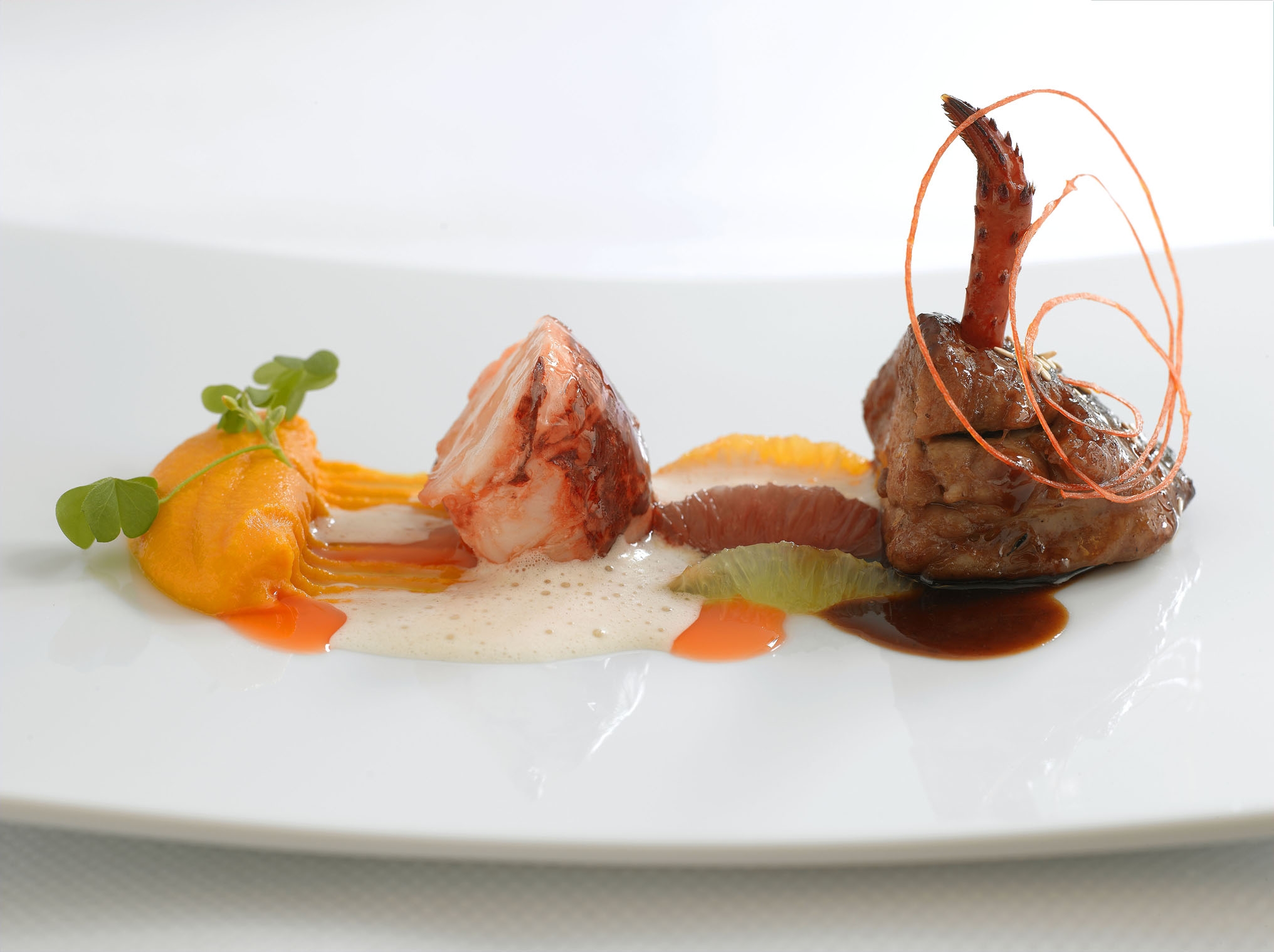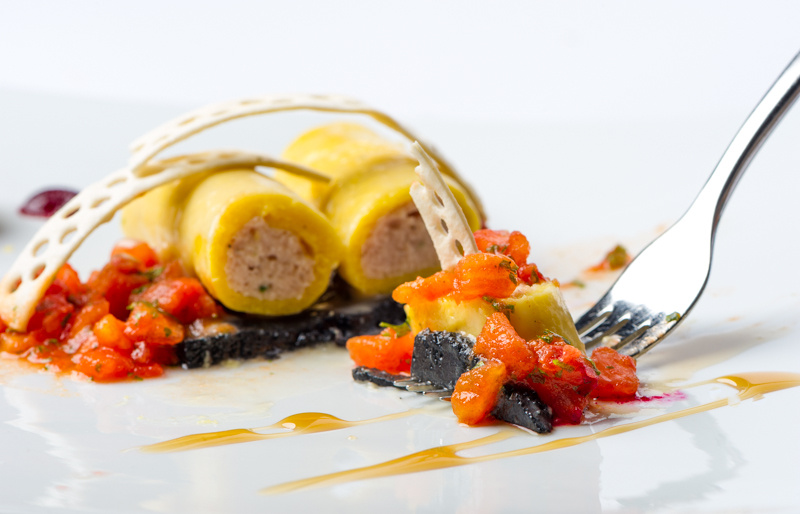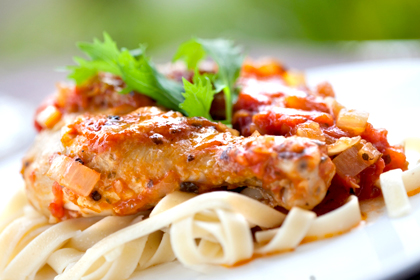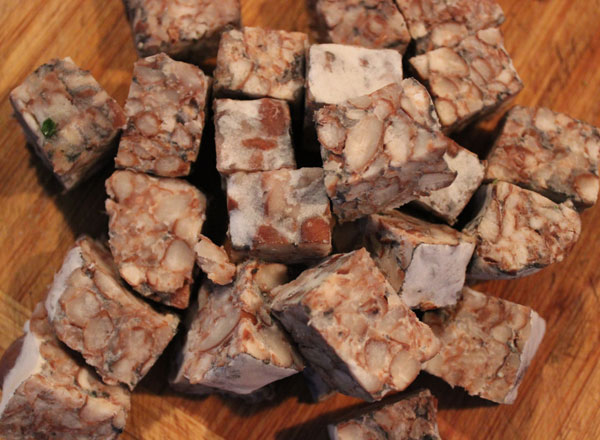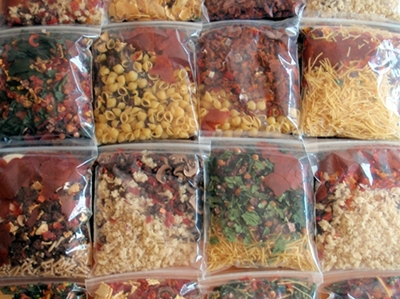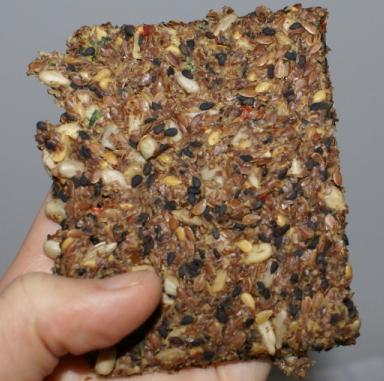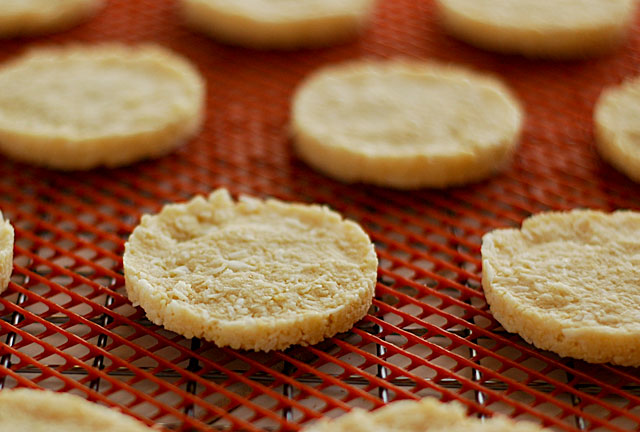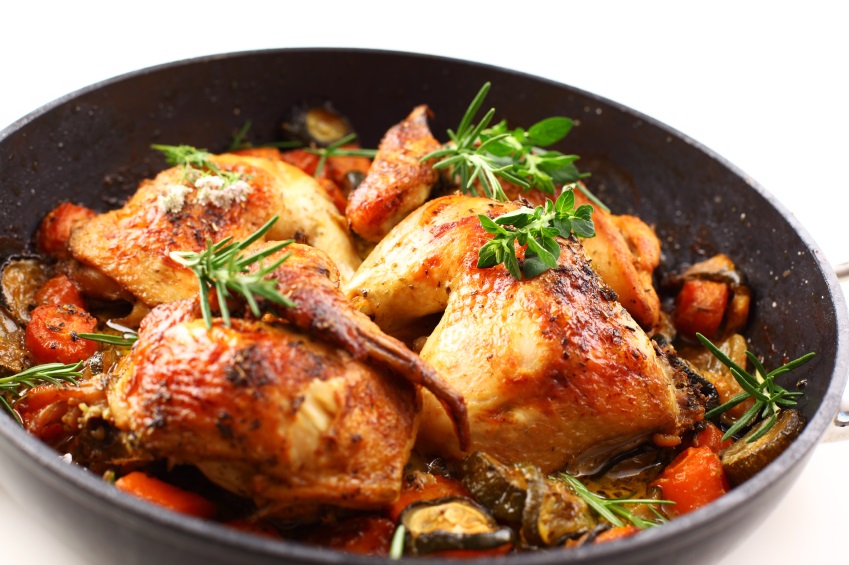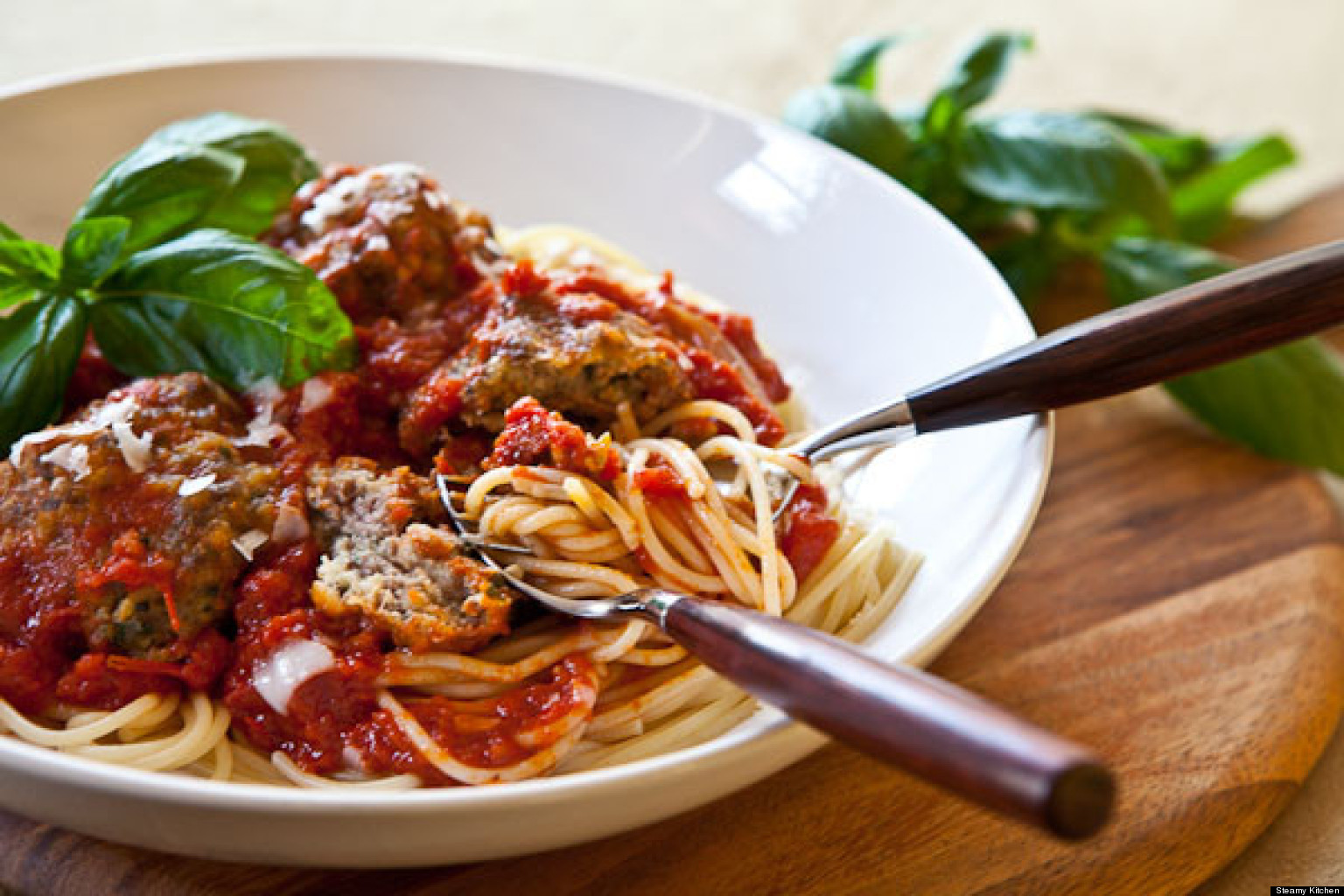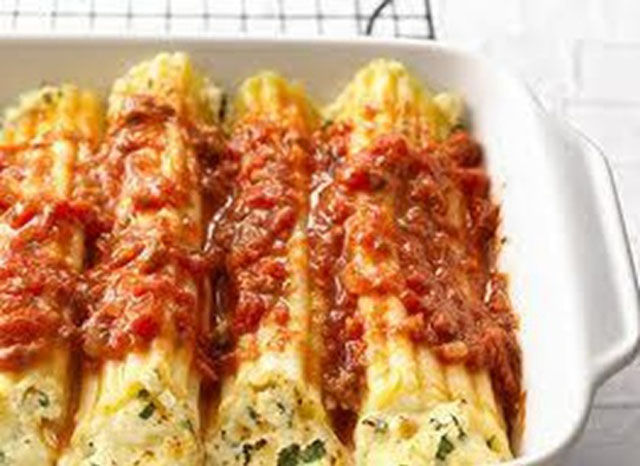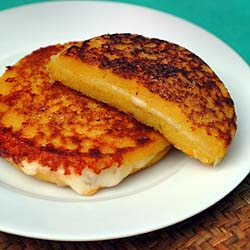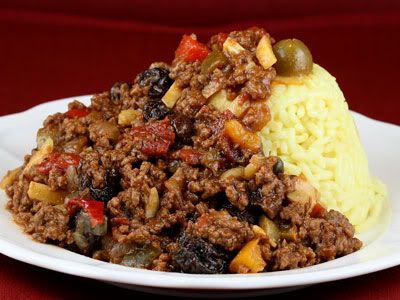Italian Food Recipe
Biography Source google.com.pk
Italian cuisine has developed through centuries of social and political changes, with roots as far back as antiquity.
Significant changes occurred with the discovery of the New World and the introduction of potatoes, tomatoes, bell peppers and maize, now central to the cuisine but not introduced in quantity until the 18th century.[1][2] Italian cuisine is noted for its regional diversity,[3][4][5] abundance of difference in taste, and it is probably the most popular in the world,[6][7] with influences abroad.[8]
Italian cuisine is characterized by its simplicity, with many dishes having only four to eight ingredients.[9] Italian cooks rely chiefly on the quality of the ingredients rather than on elaborate preparation.[10] Ingredients and dishes vary by region. Many dishes that were once regional, however, have proliferated with variations throughout the country.
Cheese and wine are a major part of the cuisine, with many variations and Denominazione di origine controllata (DOC) (regulated appellation) laws. Coffee, specifically espresso, has become important in Italian cuisine.
4 Meal structure
History
Italian cuisine has developed over the centuries. Although the country known as Italy did not unite until the 19th century, the cuisine can claim traceable roots as far back as the 4th century BCE. Through the centuries, neighbouring regions, conquerors, high-profile chefs, political upheaval and the discovery of the New World have influenced its development.
Antiquity[edit]
Apicius', De re coquinaria ("On the Subject of Cooking"), 1709 edition.
The first known Italian food writer was a Greek Sicilian named Archestratus from Syracuse in the 4th century BCE. He wrote a poem that spoke of using "top quality and seasonal" ingredients. He said that flavors should not be masked by spices, herbs or other seasonings. He placed importance on simple preparation of fish.[11]
Simplicity was abandoned and replaced by a culture of gastronomy as the Roman Empire developed. By the time De re coquinaria was published in the 1st century CE, it contained 470 recipes calling for heavy use of spices and herbs. The Romans employed Greek bakers to produce breads and imported cheeses from Sicily as the Sicilians had a reputation as the best cheesemakers. The Romans reared goats for butchering, and grew artichokes and leeks.[11]
Middle Ages[edit]
With culinary traditions from Rome and Athens, a cuisine developed in Sicily that some consider the first real Italian cuisine.[citation needed] Arabs invaded Sicily in the 9th century, introducing spinach, almonds, and rice.[citation needed] During the 12th century, a Norman king surveyed Sicily and saw people making long strings made from flour and water called atriya, which eventually became trii, a term still used for spaghetti in southern Italy[citation needed]. Normans also introduced casseroles, salt cod (baccalà) and stockfish, which remain popular.[12]
Food preservation was either chemical or physical, as refrigeration did not exist. Meats and fish would be smoked, dried or kept on ice. Brine and salt were used to pickle items such as herring, and to cure pork. Root vegetables were preserved in brine after they had been parboiled. Other means of preservation included oil, vinegar or immersing meat in congealed, rendered fat. For preserving fruits, liquor, honey and sugar were used.[13]
The northern Italian regions show a mix of Germanic and Roman culture while the south reflects Arab influence, as much Mediterranean cuisine was spread by Arab trade.[14] The oldest Italian book on cuisine is the 13th century Liber de coquina written in Naples. Dishes include "Roman-style" cabbage (ad usum romanorum), ad usum campanie which were "small leaves" prepared in the "Campanian manner", a bean dish from the Marca di Trevisio, a torta, compositum londardicum which are similar to dishes prepared today. Two other books from the 14th century include recipes for Roman pastello, Lasagna pie, and call for the use of salt from Sardinia or Chioggia.[15]
Saffron.
In the 15th century, Maestro Martino was chef to the Patriarch of Aquileia at the Vatican. His Libro de arte coquinaria describes a more refined and elegant cuisine. His book contains a recipe for Maccaroni Siciliani, made by wrapping dough around a thin iron rod to dry in the sun. The macaroni was cooked in capon stock flavored with saffron, displaying Persian influences. Of particular note is Martino's avoidance of excessive spices in favor of fresh herbs.[12] The Roman recipes include coppiette (air-dried salami) and cabbage dishes. His Florentine dishes include eggs with Bolognese torta, Sienese torta and Genoese recipes such as piperata (sweets), macaroni, squash, mushrooms, and spinach pie with onions.[16]
Martino's text was included in a 1475 book by Bartolomeo Platina printed in Venice entitled De honesta voluptate et valetudine ("On Honest Pleasure and Good Health"). Platina puts Martino's "Libro" in regional context, writing about perch from Lake Maggiore, sardines from Lake Garda, grayling from Adda, hens from Padua, olives from Bologna and Piceno, turbot from Ravenna, rudd from Lake Trasimeno, carrots from Viterbo, bass from the Tiber, roviglioni and shad from Lake Albano, snails from Rieti, figs from Tuscolo, grapes from Narni, oil from Cassino, oranges from Naples and eels from Campania. Grains from Lombardy and Campania are mentioned as is honey from Sicily and Taranto. Wine from the Ligurian coast, Greco from Tuscany and San Severino and Trebbiano from Tuscany and Piceno are also in the book.[17]
Early modern era[edit]
Bartolomeo Scappi, personal chef to Pope Pius V.
The courts of Florence, Rome, Venice and Ferrara were central to the cuisine. Cristoforo di Messisbugo, steward to Ippolito d'Este, published Banchetti Composizioni di Vivande in 1549. Messisbugo gives recipes for pies and tarts (containing 124 recipes with various fillings). The work emphasizes the use of Eastern spices and sugar.[18]
In 1570, Bartolomeo Scappi, personal chef to Pope Pius V, wrote his Opera in five volumes, giving a comprehensive view of Italian cooking of that period. It contains over 1,000 recipes, with information on banquets including displays and menus as well as illustrations of kitchen and table utensils. This book differs from most books written for the royal courts in its preference for domestic animals and courtyard birds rather than game.
Recipes include lesser cuts of meats such as tongue, head and shoulder. The third volume has recipes for fish in Lent. These fish recipes are simple, including poaching, broiling, grilling and frying after marination.
Particular attention is given to seasons and places where fish should be caught. The final volume includes pies, tarts, fritters and a recipe for a sweet Neapolitan pizza (not the current savory version, as tomatoes had not been introduced to Italy.) However, such items from the New World as corn (maize) and turkey are included.[19]
L'arte di Ben Cucinare published by Bartolomeo Stefani in 1662.
In the first decade of the 17th century, Giangiacomo Castelvetro wrote Breve Racconto di Tutte le Radici di Tutte l'Herbe et di Tutti i Frutti (A Brief Account of All Roots, Herbs and Fruit), translated into English by Gillian Riley. Originally from Modena, Castelvetro moved to England because he was a Protestant. The book has a list of Italian vegetables and fruits and their preparation. He featured vegetables as a central part of the meal, not just accompaniments.[19]
He favored simmering vegetables in salted water and serving them warm or cold with olive oil, salt, fresh ground pepper, lemon juice or verjus or orange juice. He also suggests roasting vegetables wrapped in damp paper over charcoal or embers with a drizzle of olive oil. Castelvetro's book is separated into seasons with hop shoots in the spring and truffles in the winter, detailing the use of pigs in the search for truffles.[19]
In 1662, Bartolomeo Stefani, chef to the Duchy of Mantua, published L'Arte di Ben Cucinare. He was the first to offer a section on vitto ordinario ("ordinary food"). The book described a banquet given by Duke Charles for Queen Christina of Sweden, with details of the food and table settings for each guest, including a knife, fork, spoon, glass, a plate (instead of the bowls more often used) and a napkin.[20]
Other books from this time, such as Galatheo by Giovanni della Casa, tell how scalci ("waiters") should manage themselves while serving their guests. Waiters should not scratch their heads or other parts of themselves, or spit, sniff, cough or sneeze while serving diners. The book also told diners not to use their fingers while eating and not to wipe sweat with their napkin.[20]
Modern era[edit]
Tomatoes are a typical part of Italian cuisine, but only entered common usage in the late 18th century.[21]
At the beginning of the 18th century, Italian culinary books began to emphasize the regionalism of Italian cuisine rather than French cuisine. Books written then were no longer addressed to professional chefs but to bourgeois housewives.[22] Periodicals in booklet form such as La cuoca cremonese ("The Cook of Cremona") in 1794 give a sequence of ingredients according to season along with chapters on meat, fish and vegetables. As the century progressed these books increased in size, popularity and frequency.[23]
In the 18th century, medical texts warned peasants against eating refined foods as it was believed that these were poor for their digestion and their bodies required heavy meals. It was believed by some that peasants ate poorly because they preferred eating poorly. However, many peasants had to eat rotten food and moldy bread because that was all they could afford.[24]
In 1779, Antonio Nebbia from Macerata in the Marche region, wrote Il Cuoco Maceratese ("The Cook of Macerata"). Nebbia addressed the importance of local vegetables and pasta, rice and gnocchi. For stock, he preferred vegetables and chicken over other meats.
In 1773, the Neapolitan Vincenzo Corrado's Il Cuoco Galante ("The Courteous Cook") gave particular emphasis to Vitto Pitagorico (vegetarian food). "Pitagoric food consists of fresh herbs, roots, flowers, fruits, seeds and all that is produced in the earth for our nourishment. It is so called because Pythagoras, as is well known, only used such produce. There is no doubt that this kind of food appears to be more natural to man, and the use of meat is noxious." This book was the first to give the tomato a central role with thirteen recipes.
Zuppa alli Pomidoro in Corrado's book is a dish similar to today's Tuscan pappa al pomodoro. Corrado's 1798 edition introduced a "Treatise on the Potato" after the French Antoine-Augustin Parmentier's successful promotion of it.[25] In 1790, Francesco Leonardi in his book L'Apicio moderno ("Modern Apicius") sketches a history of the Italian Cuisine from the Roman Age and gives as first a recipe of a tomato based sauce.[26]
In the 19th century, Giovanni Vialardi, chef to King Victor Emmanuel, wrote A Treatise of Modern Cookery and Patisserie with recipes "suitable for a modest household". Many of his recipes are for regional dishes from Turin including twelve for potatoes such as Genoese Cappon Magro. In 1829, Il Nuovo Cuoco Milanese Economico by Giovanni Felice Luraschi features Milanese dishes such as Kidney with Anchovies and Lemon and Gnocchi alla Romana. Gian Battista and Giovanni Ratto's La Cucina Genovese in 1871 addressed the cuisine of Liguria. This book contained the first recipe for pesto. La Cucina Teorico-Pratica written by Ippolito Cavalcanti has the first recipe for pasta with tomatoes.[27]
La scienza in cucina e l'arte di mangiare bene ("The Science of Cooking and the Art of Eating Well"), by Pellegrino Artusi, first published in 1891, is widely regarded as the canon of classic modern Italian cuisine, and it is still in print. Its recipes come mainly from Romagna and Tuscany, where he lived.
Ingredients[edit]
Olive oil is the most commonly used vegetable fat in Italian cooking, and as the basis for sauces, often replaces animal fats of butter or lard.[28]
Pesto, a Ligurian sauce made out of basil, olive oil and pine nuts, and which is eaten with pasta.
Italian cuisine has a great variety of different ingredients which are commonly used, ranging from fruits, vegetables, sauces, meats, etc. In the North of Italy, fish (such as cod, or baccalà), potatoes, rice, corn (maize), sausages, pork, and different types of cheeses are the most common ingredients. Pasta dishes with use of tomato are spread in all Italy.[29][30]
In Northern Italy though there are many kinds of stuffed pasta, polenta and risotto are equally popular if not more so.[31] Ligurian ingredients include several types of fish and seafood dishes; basil (found in pesto), nuts and olive oil are very common. In Emilia-Romagna, common ingredients include ham (prosciutto), sausage (cotechino), different sorts of salami, truffles, grana, Parmigiano-Reggiano, and tomatoes (Bolognese sauce or ragù).
Traditional Central Italian cuisine uses ingredients such as tomatoes, all kinds of meat, fish, and pecorino cheese. In Tuscany and Umbria pasta is usually served alla carrettiera (a tomato sauce spiked with peperoncini hot peppers).[32] Finally, in Southern Italy, tomatoes – fresh or cooked into tomato sauce – peppers, olives and olive oil, garlic, artichokes, oranges, ricotta cheese, eggplants, zucchini, certain types of fish (anchovies, sardines and tuna), and capers are important components to the local cuisine.
Italian cuisine is also well known (and well regarded) for its use of a diverse variety of pasta. Pasta include noodles in various lengths, widths and shapes. Distinguished on shapes they are named — penne, maccheroni, spaghetti, linguine, fusilli, lasagne and many more varieties that are filled with other ingredients like ravioli and tortellini.
The word pasta is also used to refer to dishes in which pasta products are a primary ingredient. It is usually served with sauce. There are hundreds of different shapes of pasta with at least locally recognized names.
Examples include spaghetti (thin rods), rigatoni (tubes or cylinders), fusilli (swirls), and lasagne (sheets). Dumplings, like gnocchi (made with potatoes) and noodles like spätzle, are sometimes considered pasta. They are both traditional in parts of Italy.
Pasta is categorized in two basic styles: dried and fresh. Dried pasta made without eggs can be stored for up to two years under ideal conditions, while fresh pasta will keep for a couple of days in the refrigerator. Pasta is generally cooked by boiling. Under Italian law, dry pasta (pasta secca) can only be made from durum wheat flour or durum wheat semolina, and is more commonly used in Southern Italy compared to their Northern counterparts, who traditionally prefer the fresh egg variety.
Durum flour and durum semolina have a yellow tinge in color. Italian pasta is traditionally cooked al dente (Italian: firm to the bite, meaning not too soft). Outside Italy, dry pasta is frequently made from other types of flour, but this yields a softer product that cannot be cooked al dente. There are many types of wheat flour with varying gluten and protein levels depending on variety of grain used.
Particular varieties of pasta may also use other grains and milling methods to make the flour, as specified by law. Some pasta varieties, such as pizzoccheri, are made from buckwheat flour. Fresh pasta may include eggs (pasta all'uovo 'egg pasta'). Whole wheat pasta has become increasingly popular because of its supposed health benefits over pasta made from refined flour.
Regional variation[edit]
Each area has its own specialties, primarily at a regional level, but also at provincial level. The differences can come from a bordering country (such as France or Austria), whether a region is close to the sea or the mountains, and economics. Italian cuisine is also seasonal with priority placed on the use of fresh produce.[citation needed]
Friuli-Venezia Giulia[edit]
Original San Daniele ham.
Friuli-Venezia Giulia conserved, in its cuisine, the historical links with Austria-Hungary. Udine and Pordenone, in the western part of Friuli, are known for their traditional San Daniele del Friuli ham, Montasio cheese, and Frico cheese. Other typical dishes are pitina (meatballs made of smoked meats), game, and various types of gnocchi and polenta.
The majority of the eastern regional dishes are heavily influenced by Austrian, Hungarian, Slovene and Croatian cuisines: typical dishes include Istrian Stew (soup of beans, sauerkraut, potatoes, bacon and spare ribs), Vienna sausages, goulash, ćevapi, apple strudel, gugelhupf. Pork can be spicy and is often prepared over an open hearth called a fogolar. Collio Goriziano, Friuli Isonzo, Colli Orientali del Friuli and Ramandolo are well-known DOC regional wines.
Veneto[edit]
Polenta served with Sopressa and mushrooms, a traditional peasant food of Veneto.
Tiramisu.
Venice and many surrounding parts of Veneto are known for risotto, a dish whose ingredients can highly vary upon different areas, as fish and seafood being added closer to the coast and pumpkin, asparagus, radicchio and frogs' legs appearing further away from the Adriatic. Made from finely ground maize meal, polenta is a traditional, rural food typical of Veneto and most of Northern Italy. It may find its way into stirred dishes and baked dishes and can be served with various cheese, stockfish or meat dishes.
Some polenta dishes includes porcini, rapini, or other vegetables or meats, such as small song-birds in the case of the Venetian and Lombard dish polenta e osei, or sausages. In some areas of Veneto it can be also made of a particular variety of cornmeal, named biancoperla, so that the colour of polenta is white and not yellow (the so-called polenta bianca).
Beans, peas and other legumes are seen in these areas with pasta e fagioli (beans and pasta) and risi e bisi (rice and peas). Veneto features heavy dishes using exotic spices and sauces. Ingredients such as stockfish or simple marinated anchovies are found here as well.
Less fish and more meat is eaten away from the coast. Other typical products are sausages such as Soppressa Vicentina, garlic salami, Piave cheese and Asiago cheese. High quality vegetables are prized, such as red radicchio from Treviso and white asparagus from Bassano del Grappa. Perhaps the most popular dish of Venice is fegato alla veneziana, thinly-sliced veal liver sauteed with onions.
Traditional South Tyrol speck.
Squid and cuttlefish are common ingredients, as is squid ink, called nero di seppia.[33][34] Regional desserts include tiramisu (made of biscuits dipped in coffee, layered with a whipped mixture of egg yolks and mascarpone, and flavored with liquor and cocoa[35]), baicoli (biscuits made with butter and vanilla) and nougat.
The most celebrated Veneto wines include Bardolino, Prosecco, Soave and Valpolicella DOC wines.
Trentino-Alto Adige[edit]
Before the Council of Trent in the middle of the 16th century, the region was known for the simplicity of its peasant cuisine. When the prelates of the Catholic Church established there, they brought the art of fine cooking with them. Later, also influences from Venice and the Austrian Habsburg Empire came in.[36]
The Trentino subregion produces various types of sausages, polenta, yogurt, cheese, potato cake, funnel cake and freshwater fish. In the Südtirol (Alto Adige) subregion, due to the German-speaking majority population, strong Austrian and Slavic influences prevail. The most renowned local product is traditional speck juniper-flavored ham which, as Speck Alto Adige PGI, is regulated by the European Union under the protected geographical indication (PGI) status. Goulash, knödel, apple strudel, kaiserschmarrn, krapfen, rösti, spätzle and rye bread are regular dishes, along with potatoes, dumpling, homemade sauerkraut, and lard.[36] The territory of Bolzano is also reputed for its Müller-Thurgau white wines.
Lombardy[edit]
Risotto alla milanese with saffron.
Traditional Cotoletta alla milanese.
The regional cuisine of Lombardy is heavily based upon ingredients like maize, rice, beef, pork, butter, and lard. Rice dishes are very popular in this region, often found in soups as well as risotto. The best-known version is risotto alla milanese, flavoured with saffron and typically served with many typical Milanese main courses, such as ossobuco alla milanese (cross-cut veal shanks braised with vegetables, white wine and broth) and cotoletta alla milanese (a fried cutlet similar to Wiener schnitzel, but cooked "bone-in").[37]
Other regional specialities include cassoeula (a typical winter dish prepared with cabbage and pork), Cremona's Mostarda (rich condiment made with candied fruit and a mustard flavoured syrup), Valtellina's Bresaola (air-dried salted beef) and Pizzoccheri (a flat ribbon pasta, made with 80% buckwheat flour and 20% wheat flour cooked along with greens, cubed potatoes and layered with pieces of Valtellina Casera cheese) and Mantua's tortelli di zucca (ravioli with pumpkin filling) accompanied by melted butter and followed by turkey stuffed with chicken or other stewed meats.[37]
Regional cheeses include Robiola, Crescenza, Taleggio, Gorgonzola and Grana Padano (the plains of central and southern Lombardy allow intensive cattle-raising). Polenta is generally common across the region. Regional desserts include the famous panettone Christmas cake (sweet bread with candied orange, citron, and lemon zest, as well as raisins, which are added dry and not soaked).
Valle d'Aosta[edit]
Fontina cheese.
In the Aosta Valley, bread-thickened soups are customary as well as cheese fondue, chestnuts, potatoes, rice. Polenta is a staple along with rye bread, smoked bacon and game from the mountains and forests. Butter and cream are important in stewed, roasted and braised dishes.[38] Typical regional products include Fontina cheese, Vallée d'Aoste Lard d'Arnad and Génépi Artemisia-based liqueur.
Piedmont[edit]
Traditional Piedmontese agnolotti.
Between the Alps and the Po valley, with a large number of different ecosystems, this region offers the most refined and varied cuisine of the Italian peninsula. Point of union of traditional Italian and French cuisine, Piedmont is the Italian region with the largest number of cheeses Protected Geographical Status and wines Denominazione di origine controllata. It is also the region where both Slow Food association and the most prestigious school of Italian cooking, the University of Gastronomic Sciences, were founded.[39]
Piedmont is a region where gathering nuts, mushrooms, cardoons and hunting and fishing takes place. Truffles, garlic, seasonal vegetables, cheese and rice are all used. Wines from the Nebbiolo grape such as Barolo and Barbaresco are produced as well as wines from the Barbera grape, fine sparkling wines, and the sweet, lightly sparkling, Moscato d'Asti. The region is also famous for its Vermouth and Ratafia production.[39]
Castelmagno is a prized cheese of the region. Piedmont is also famous for the quality of its Carrù beef (particularly famous for its fair of the "Bue Grasso", Fat Ox), hence the tradition of eating raw meat seasoned with garlic oil, lemon and salt the famous Carpaccio, the famous Brasato al vino, wine stew made from marinated beef, and boiled beef served with various sauces.[39]
The food most typical of the Piedmont tradition are its traditional agnolotti (pasta folded over with a roast beef meat and vegetable stuffing), Panissa (a typical dish of Vercelli, a kind of risotto with Arborio rice or Maratelli rice, the typical kind of Saluggia beans, onion, Barbera wine, lard, salami, salt and pepper), taglierini (thinner version of tagliatelle), bagna cauda (sauce of garlic, anchovies, olive oil and butter) and bicerin (hot drink made of coffee, chocolate and whole milk). Finally Piedmont is one of the Italian capitals of pastry and chocolate in particular, with products like Nutella, gianduiotto and marron glacé that are famous worldwide.[39]
Liguria[edit]
Pasta with pesto sauce.
Liguria is known for herbs and vegetables (as well as seafood) in its cuisine. Savory pies are popular, mixing greens and artichokes along with cheeses, milk curds and eggs. Onions and olive oil are used. Because of a lack of land suitable for wheat, the Ligurians use chickpeas in farinata and polenta-like panissa. The former is served plain or topped with onions, artichokes, sausage, cheese or young anchovies.[40]
Hilly districts use chestnuts as a source of carbohydrates. Ligurian pastas include corzetti from the Polcevera valley, pansoti, a triangular shaped ravioli filled with vegetables, piccagge, pasta ribbons made with a small amount of egg and served with artichoke sauce or pesto sauce, trenette, made from whole wheat flour cut into long strips and served with pesto, boiled beans and potatoes, and trofie, a Ligurian gnocchi made from whole grain flour and boiled potatoes, made into a spiral shape and often tossed in pesto.[40] Many Ligurians emigrated to Argentina in the late 19th and early 20th centuries, influencing the cuisine of this country (which otherwise dominated by meat and dairy produces which the narrow ligurian hinterland would have not allowed).
Emilia-Romagna[edit]
Parmigiano cheese.
Tagliatelle with bolognese sauce.
Emilia-Romagna is known for its egg and filled pasta made with soft wheat flour. The Romagna subregion is known as well for pasta dishes like cappelletti, garganelli, strozzapreti, sfoglia lorda and tortelli alla lastra or very peculiar cheese like squacquerone, piada snacks are famous worldwide.
In the Emilia subregion, except Piacenza which is heavily influenced by the cuisines of Lombardy, rice is eaten to a lesser extent. Polenta, a maize-based dish, is common both in Emilia and Romagna.
Bologna is notable for pasta dishes like tortellini, lasagne, gramigna and tagliatelle which are found also in many other parts of the region in different declinations. The celebrated balsamic vinegar is made only in the Emilian cities of Modena and Reggio Emilia, following legally binding traditional procedures.[41] Parmigiano Reggiano cheese is produced in Reggio Emilia, Parma, Modena and Bologna and is much used in cooking, while Grana Padano variety is produced in Piacenza.
Although the Adriatic coast is a major fishing area (well known for its eels and clams), the region is more famous for its meat products, especially pork-based, that include: Parma's prosciutto, culatello and Felino salami, Piacenza's pancetta, coppa and salami, Bologna's mortadella and salame rosa, Modena's zampone, cotechino and cappello del prete and Ferrara's salama da sugo. Piacenza is also known for some dishes prepared with horse and donkey meat. Regional desserts include zuppa inglese (custard-based dessert made with sponge cake and Alchermes liqueur) and panpepato (Christmas cake made with pepper, chocolate, spices, and almonds).
Tuscany[edit]
Ribollita, a classic Tuscan peasant dish.
Simplicity is central to the Tuscan cuisine. Legumes, bread, cheese, vegetables, mushrooms and fresh fruit are used. A good example would be ribollita, a notable Tuscan soup whose name literally means "reboiled". Like most Tuscan cuisine, the soup has peasant origins.
It was originally made by reheating (i.e. reboiling) the leftover minestrone or vegetable soup from the previous day. There are many variations but the main ingredients always include leftover bread, cannellini beans and inexpensive vegetables such as carrot, cabbage, beans, silverbeet, cavolo nero (Tuscan kale), onion and olive oil.
A regional Tuscan pasta known as pici resembles thick, grainy-surfaced spaghetti, and is often rolled by hand. White truffles from San Miniato appear in October and November. High-quality beef, used for the traditional Florentine steak, come from the Chianina cattle breed of the Chiana Valley and the Maremmana from Maremma.
Pork is also produced.[42] The region is well-known also for its rich game, especially wild boar, hare, fallow deer, roe deer and pheasant that often are used to prepare pappardelle dishes. Regional desserts include panforte (prepared with honey, fruits and nuts), ricciarelli (biscuits made using an almond base with sugar, honey and egg white), and cavallucci (cookies made with almonds, candied fruits, coriander, flour, honey). Well-known regional wines include Brunello di Montalcino, Carmignano, Chianti, Morellino di Scansano, Parrina, Sassicaia, Vernaccia di San Gimignano.
Umbria[edit]
Norcia black truffles.
Many Umbrian dishes are prepared by boiling or roasting with local olive oil and herbs. Vegetable dishes are popular in the spring and summer, while fall and winter sees meat from hunting and black truffles from Norcia. Meat dishes include the traditional wild boar sausages, pheasants, geese, pigeons, frogs, snails. Castelluccio is known for its lentils, Spoleto and Monteleone are known for spelt. Freshwater fish include lasca, trout, freshwater perch, grayling, eel, barbel, whitefish, and tench.[43] Orvieto and Sagrantino di Montefalco are important regional wines.
Marche[edit]
On the coast of Marche, fish and seafood are produced. Inland, wild and domestic pigs are used for sausages and hams. These hams are not thinly sliced, but cut into bite-sized chunks. Suckling pig, chicken and fish are often stuffed with rosemary or fennel fronds and garlic before being roasted or placed on the spit.[44]
Ascoli, Marche's southernmost province, is well known for Olive all'ascolana, (stoned olives stuffed with several minced meats, egg and Parmesan, then fried).[45] Another well-known Marche product are the Maccheroncini di Campofilone, from little town of Campofilone, a kind of hand-made pasta made only of hard grain flour and eggs, cut so thin that melts in the mouth.
Lazio[edit]
Spaghetti alla carbonara.
Pasta dishes based on the use of guanciale (unsmoked bacon prepared with pig's jowl or cheeks) are often found in Lazio, such as pasta alla carbonara, and pasta all'amatriciana. Another pasta dish of the region is arrabbiata, with spicy tomato sauce. The regional cuisine widely use offal, resulting in dishes like the entrail-based rigatoni with pajata sauce and coda alla vaccinara.[46]
Iconic of Lazio is cheese made from ewes' milk (Pecorino Romano), porchetta (savory, fatty, and moist boneless pork roast) and Frascati white wine. The influence of the ancient Jewish community can be noticed in the Roman cuisine's traditional carciofi alla giudia.[46]
Abruzzo and Molise[edit]
A Montepulciano d'Abruzzo wine labelled as being made from old vines.
Pasta, meat and vegetables are central to the cuisine of Abruzzo and Molise. Chili peppers (peperoncini) are typical of Abruzzo, where they are called diavoletti ("little devils") for their spicy heat. Due to the long history of shepherding in Abruzzo and Molise, lamb dishes are common. Lamb is often used with pasta.[47] Mushrooms (usually wild mushrooms), rosemary, and garlic are also extensively used in Abruzzese cuisine.
Best-known is the extra virgin olive oil produced in the local farms on the hills of the region, marked by the quality level DOP and considered one of the best in the country.[48] Renowned wines like Montepulciano DOCG and Trebbiano d'Abruzzo DOC are considered amongst the world’s finest wines.[49] In 2012 a bottle of Trebbiano d'Abruzzo Colline Teramane ranked #1 in the top 50 Italian wine award.[50] Centerbe ("Hundred Herbs") is a strong (72% alcohol), spicy herbal liqueur drunk by the locals. Another liqueur is genziana, a soft distillate of gentian roots.
The best-known dish from Abruzzo is arrosticini, little pieces of castrated lamb on a wooden stick and cooked on coals. The chitarra (literally "guitar") is a fine stringed tool that pasta dough is pressed through for cutting. In the province of Teramo, famous local dishes include the virtù soup (made with legumes, vegetables and pork meat); the timballo (pasta sheets filled with meat, vegetables or rice); and the mazzarelle (lamb intestines filled with garlic, marjoram, lettuce, and various spices). The popularity of saffron, grown in the province of L'Aquila, has waned in recent years.[47] The most famous dish of Molise is cavatelli, a long shaped, handmade maccheroni-type pasta made of flour, semolina and water, often served with meat sauce, broccoli or mushrooms. Pizzelle cookies are a common dessert, especially around Christmas.
Traditional Neapolitan pizza.
Campania extensively produces tomatoes, peppers, spring onions, potatoes, artichokes, fennel, lemons and oranges which all take on the flavor of volcanic soil. The Gulf of Naples offers fish and seafood. Campania is one of the largest producers and consumers of pasta in Italy, especially spaghetti. In the regional cuisine, pasta is prepared in various styles that can feature tomato sauce, cheese, clams and shellfish.[51]
Spaghetti alla puttanesca is a popular dish made with olives, tomatoes, anchovies, capers, chili peppers and garlic. The region is well-known also for its mozzarella production (especially from the milk of water buffalo) that's used in a variety of dishes, including parmigiana (shallow fried eggplant slices layered with cheese and tomato sauce, then baked). Desserts include struffoli (deep fried balls of dough) ricotta-based pastiera and sfogliatelle, and rum-dipped babà.[51]
Originating in Neapolitan cuisine, pizza has become popular in many different parts of the world.[52] Pizza is an oven-baked, flat, disc-shaped bread typically topped with a tomato sauce, cheese (usually mozzarella) and various toppings depending on the culture. Since the original pizza, several other types of pizzas have evolved.
Since Naples was the capital of the Kingdom of Two Sicilies, its cuisine took much from the culinary traditions of all the Campania region, reaching a balance between dishes based on rural ingredients (pasta, vegetables, cheese) and seafood dishes (fish, crustaceans, mollusks). A vast variety of recipes is influenced by the local aristocratic cuisine, like timballo and the sartù di riso, pasta or rice dishes with very elaborate preparation, while the dishes coming from the popular traditions contain inexpensive but nutritionally healthy ingredients, like pasta with beans and other pasta dishes with vegetables.
Famous regional wines are Aglianico (Taurasi), Fiano, Falanghina, and Greco di Tufo.
Puglia (Apulia)[edit]
Orecchiette with tomato sauce.
Apulia is a massive food producer: major production includes wheat, tomatoes, zucchini, broccoli, bell peppers, potatoes, spinach, eggplants, cauliflower, fennel, endive, chickpeas, lentils, beans and cheese (like the traditional caciocavallo cheese). Apulia is also the largest producer of olive oil in Italy. The sea offers abundant fish and seafood that are extensively used in the regional cuisine, especially oysters, and mussels.
Goat and lamb are occasionally used.[53] The region is known for pasta made from durum wheat and traditional pasta dishes featuring orecchiette-type pasta, often served with tomato sauce, potatoes, mussels or cime di rapa. Pasta with cherry tomatoes and arugula is also popular.[54]
Regional desserts include zeppola, doughnuts usually topped with powdered sugar and filled with custard, jelly, cannoli-style pastry cream or a butter-and-honey mixture. For Christmas, Apulians make a very traditional rose shape pastry called Cartellate. These are fried and dipped in Vin Cotto which is a reduction of wine or in some cases of fig juice.
Basilicata[edit]
Basilicata's tarallo dolce and calzoncelli
The cuisine of Basilicata is mostly based on inexpensive ingredients and deeply anchored in rural traditions.
Pork is an integral part of the regional cuisine, often made into sausages or roasted on a spit. Famous dry sausages from the region are lucanica and soppressata. Wild boar, mutton and lamb are also popular. Pasta sauces are generally based on meats or vegetables. Spicy peperoncini is largely used, as well as the so-called "peperoni cruschi" (crunchy peppers).[55] The region produces cheeses like the Pecorino di Filiano PDO, Canestrato di Moliterno PGI, Pallone di Gravina and Paddraccio and olive oils like the Vulture PDO.[56]
Basilicata is known for capunti, a thick and short oval pasta whose shape is often compared to that of an open empty pea pod. Capunti are usually served with a hearty vegetable tomato sauce or various meat sauces.
Among the traditional dishes are lagane e ceci, also known as piatto del brigante (brigand's dish), pasta prepared with chick peas and peeled tomatoes;[57] rafanata, a type of omelette with horseradish; ciaudedda, a vegetable stew with artichokes, potatoes, broad beans and pancetta;[58] and the baccalà alla lucana, one of the few recipes made with fish. Desserts include taralli dolci, made with sugar glaze and scented with anise; and calzoncelli, fried pastries filled with a cream of chestnuts and chocolate.
The most famous wine of the region is the Aglianico del Vulture DOCG, others include Matera DOC, Terre dell'Alta Val d'Agri and Grottino di Roccanova.
Basilicata is also known for its mineral waters which are sold widely in Italy. The springs are mostly located in the volcanic basin of the Vulture area.
Calabria[edit]
In Calabria, a history of French rule under the House of Anjou and Napoleon, along with Spanish influence, affected the language and culinary skills as seen in the naming of things such as cake, gatò, from the French gateau. Seafood includes swordfish, shrimp, lobster, sea urchin and squid. Macaroni-type pasta is widely used in regional dishes, often served with goat, beef or pork sauce and salty ricotta.[59]
Main courses include Frìttuli (prepared by boiling pork rind, meat and trimmings in pork fat), different varieties of spicy sausages (like Nduja and Capicola), goat and land snails. Melon and watermelon are traditionally served in a chilled fruit salad or wrapped in ham.[60] Calabrian wines include Greco di Bianco, Bivongi, Cirò, Dominici, Lamezia, Melissa, Pollino, Sant'Anna di Isola Capo Rizzuto, San Vito di Luzzi, Savuto, Scavigna, Verbicaro.
Another famous dish that has a Calabrese background is its famous Calabrese pizza. This pizza has a Neapolitan-based structure with fresh tomato sauce and a cheese base. However, what makes this type of pizza unique from others is its spicy, but rather tasty flavor. Some of the ingredients included in a Calabrese pizza are: thinly sliced hot soppressata, hot capicola, hot peppers and fresh mozzarella. A Calabrese style pizza has become a well known menu item in many Italian restaurants around the world.
Sicily[edit]
Cassata, a cake containing different nuts, raisins, ricotta, different liqueurs and candied fruits.
Cannoli, rich Sicilian pastries.
Sicily shows traces of all the cultures which established themselves on the island over the last two millennia. Although its cuisine undoubtably has a predominantly Italian base, Sicilian food also has Spanish, Greek and Arab influences. Dionysus is said to have introduced wine to the region: a trace of historical influence from Ancient Greece.[61]
The ancient Romans introduced lavish dishes based on goose. The Byzantines favored sweet and sour flavors and the Arabs brought sugar, citrus, rice, spinach, and saffron. The Normans and Hohenstaufens had a fondness for meat dishes. The Spanish introduced items from the New World including chocolate, maize, turkey and tomatoes.[61]
Much of the island's cuisine encourages the use of fresh vegetables such as eggplant, peppers, and tomatoes, and fish such as tuna, sea bream, sea bass, cuttlefish, and swordfish. In Trapani, in the extreme western corner of the island, North African influences are clear in the use of various couscous based dishes, usually combined with fish. Traditional specialties from Sicily include arancini (a form of deep-fried rice croquettes), pasta alla Norma, caponata, pani ca meusa, and a host of desserts and sweets such as cannoli, granita, and cassata).
Typical of Sicily is Marsala, a red, fortified wine similar to Port and largely exported.
Sardinia[edit]
An exhibition of typical Sardinian pasta shapes, cakes, and pastries.
Traditional carasau bread.
Suckling pig and wild boar are roasted on the spit or boiled in stews of beans and vegetables, thickened with bread. Herbs such as mint and myrtle are widely used in the regional cuisine. Sardinia also has many special types of bread, made dry, which keeps longer than high-moisture breads.[62]
Also baked are carasau bread civraxiu, coccoi pinatus, a highly decorative bread, and pistoccu made with flour and water only, originally meant for herders, but often served at home with tomatoes, basil, oregano, garlic and a strong cheese. Rock lobster, scampi, squid, tuna, sardines are the predominant seafoods.[62]
Casu marzu is a very strong cheese produced in Sardinia, but is of questionable legality due to hygienic concerns.[63]
Meal structure[edit]
Main article: Meal structure in Italy
Traditionally, meals in Italy usually contain three or four courses. Especially on weekends, meals are often seen as a time to spend with family and friends rather than simply for sustenance; thus, meals tend to be longer than in other cultures. During holidays such as Christmas and New Year's Eve, feasts can last for hours.
Today, the traditional Italian menu is kept mainly for special events (such as weddings) while an everyday menu includes only the first and/or second course, the side dish, and coffee. A notable aspect of Italian meals is that the primo or first course is usually a more filling dish such as risotto or pasta. Italian cuisine also includes single courses (all-in-one courses), providing carbohydrates and proteins at the same time (e.g. pasta and legumes).
Italian Food Recipe
Italian Food Recipe
Italian Food Recipe
Italian Food Recipe
Italian Food Recipe
Italian Food Recipe
Italian Food Recipe
Italian Food Recipe
Italian Food Recipe
Italian Food Recipe
Italian Food Recipe
Italian Food Recipe
Italian Food Recipe
Italian Food Recipe
Italian Food Recipe
Italian Food Recipe
Italian Food Recipe



